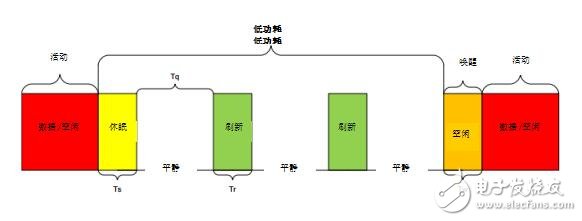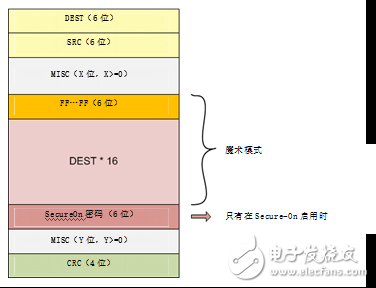"Why is Ethernet so power-hungry?" is a very common problem. Typical active power 10/100 Mbps Ethernet physical layer (PHY) transceivers consume between 110mW and 300mW, while 10/100/1000Mbps Gigabit Ethernet PHYs consume 450mW to 1000mW. It is not uncommon for the Ethernet PHY to be the largest power consumer on the board and an important consideration for assessing the thermal balance of a closed system. At present, a variety of conceptual Ethernet low power models can reduce the overall system power. This article introduces two popular power-saving features that enable lower system temperatures and lower power costs.
Energy efficient EthernetEnergy Efficient Ethernet (EEE), as defined by the Institute of Electrical and Electronics Engineers (IEEE) 802.3az, refers to PHY and Media Access Control (MAC) that eliminate idle signaling during low channel utilization. As shown in Figure 1, when the transmitter is disabled at "calm" time, EEE can achieve a low power consumption period with a short refresh cycle. These quiet times save energy by avoiding wasteful actions such as continuously transmitting idle signals on the active link, while the refresh cycle ensures the presence of the link and the timing between the PHY and the PHY remains active.

Figure 1: EEE status flow chart
When the transmission data appears, the PHY's MAC signal will exit the EEE state, and the EEE mode will be transparently presented to a higher level. The PHY will exit the low power mode and transmit the idle code group to cause the remote device to exit the low power mode.
For more information on EEE, please refer to the application note "DP83822 Energy Efficient Ethernet IEEE 802.3az."
Remote wakeupRemote Wake-up (WOL) keeps the Ethernet PHY active while saving power by enabling the system's back-end components (processors, microcontrollers (MCUs), application-specific integrated circuits (ASICs), or other components) Sexual power sleep. When the Ethernet PHY receives a known magic packet, it wakes up such backend components.
When the system has a well-defined trigger wake-up with WOL stimulus, the WOL mechanism allows the engineer to save overall system power while keeping the Ethernet transceiver awake. There are many different implementation methods for WOL. For details, see the application note "DP83822 Remote Wakeup."
Figure 2 shows the magic mode mechanism that the Ethernet PHY monitors the ingress packet before sending the wake-up signal.

Figure 2: WOL Magic Pack Example
Now that you know how to use the Ethernet PHY to save power, which one do you plan to use in your system?
other information· Learn more about the DP83822I, one of the industry's lowest power 10/100 Ethernet PHY products.
· Understand the DP83867IR Gigabit Ethernet PHY.
· View TI's entire Ethernet portfolio.
· Read the application note "DP83822 Low Power Mode."
· Utilize an EMI/EMC compliant 10/100 Mbps Ethernet brick reference design with a light or twisted pair interface.
Put the apple earbuds Case in the leather case , it will protect your apple earbuds.We sell apple earbuds case cover,hot selling apple earbuds case,customized apple earbuds cases,etc.
We employ the most creative designers and tech brilliant engineers to make the best cases. We believe our high-quality products with competitive prices will satisfy your needs.
The productive process :
Make the Products Mould –Cutting the fabric –Do the half products – Finish products – Cleaning –QC- Package – Shippment .
apple earbuds,Apple Earbuds cover,hot selling Apple Earbuds,customized Apple Earbuds case
Guangzhou Ysure Electronic Technology Co., Ltd. , https://www.ysurecase.com
